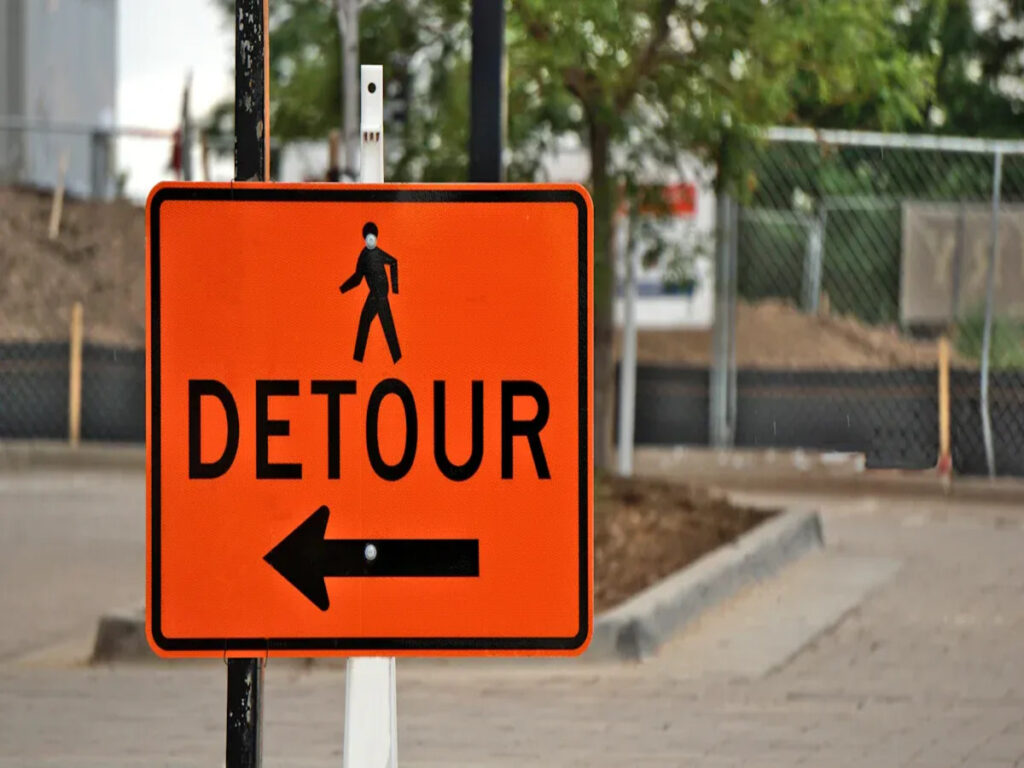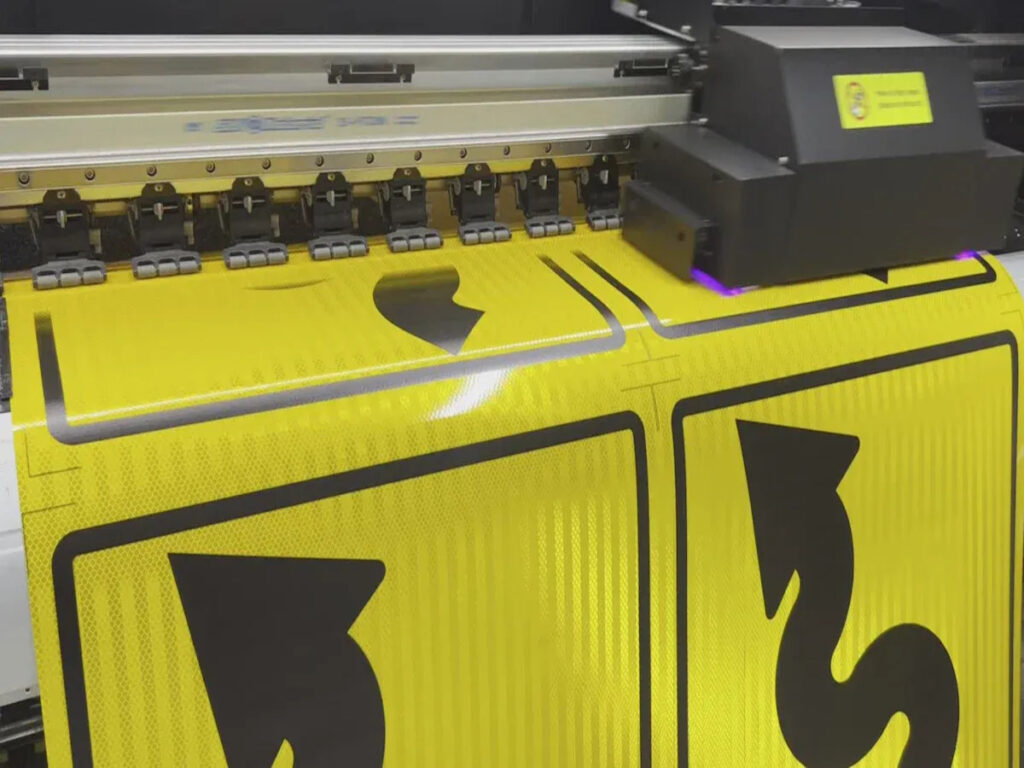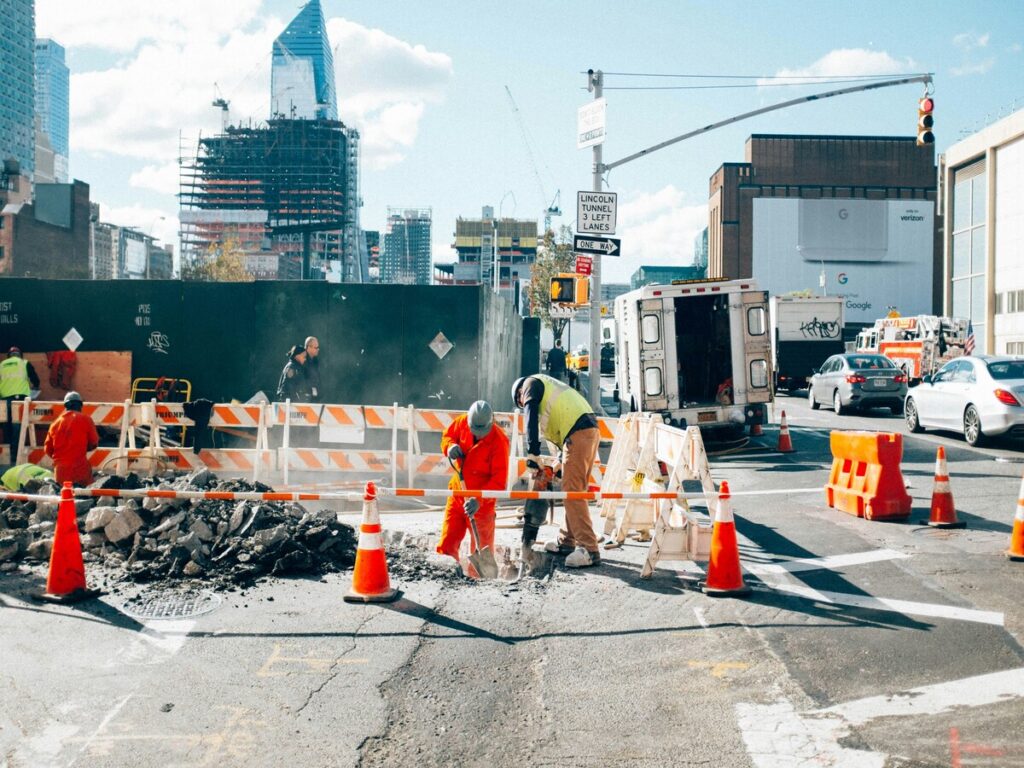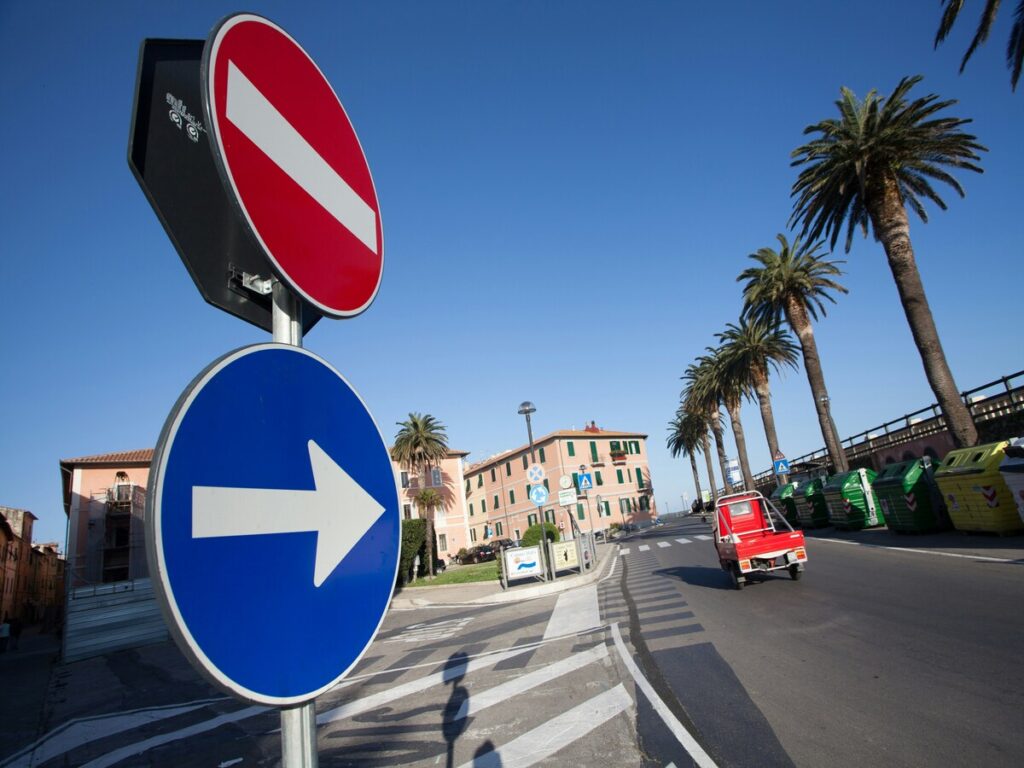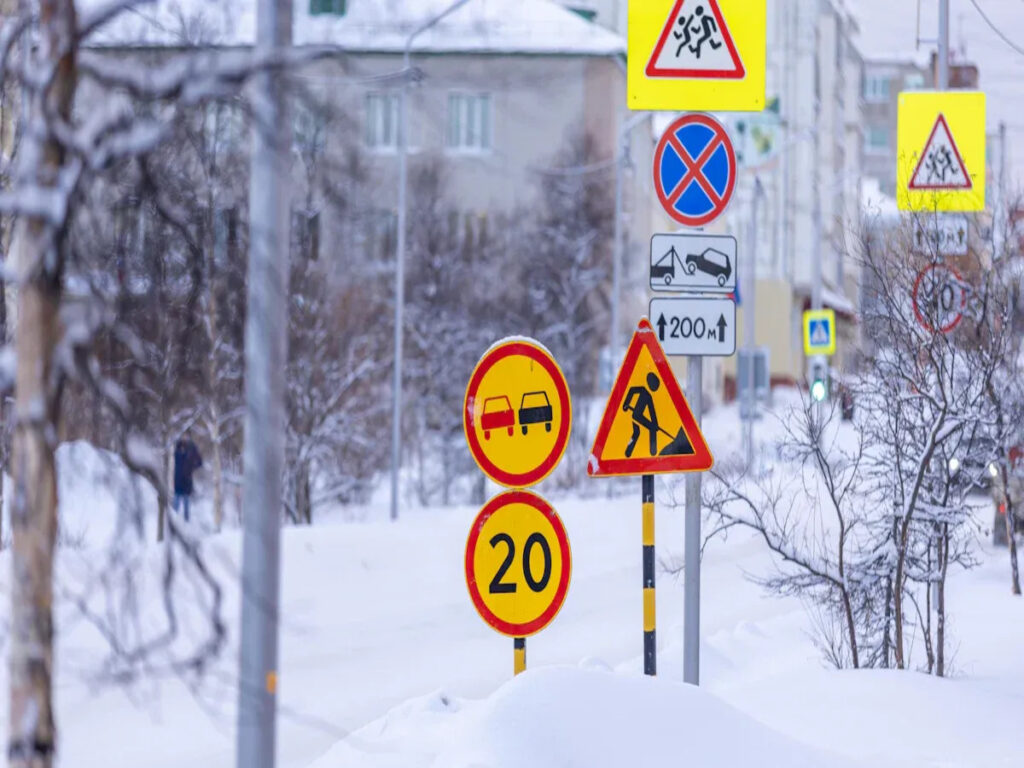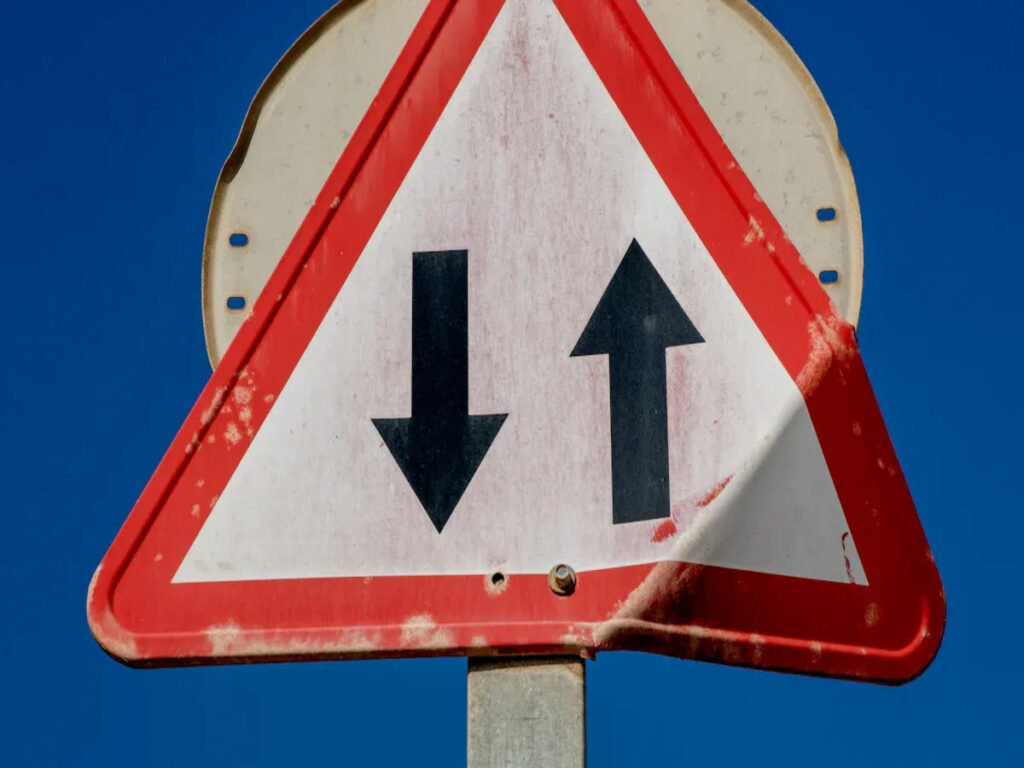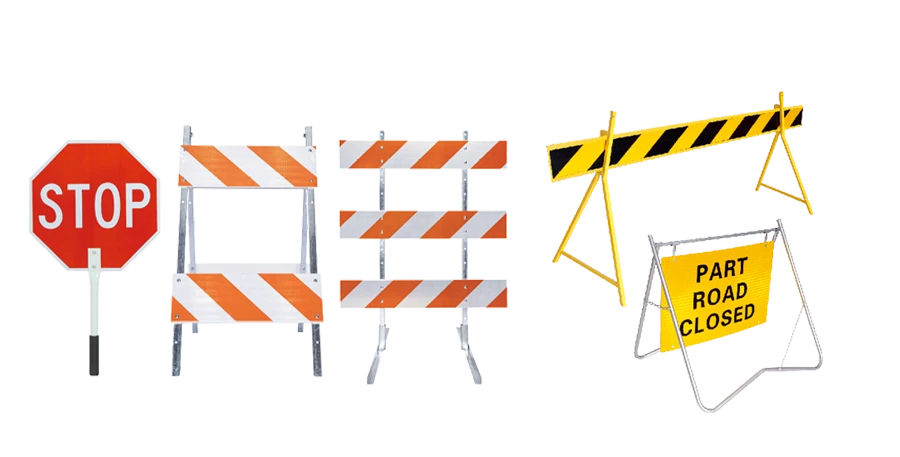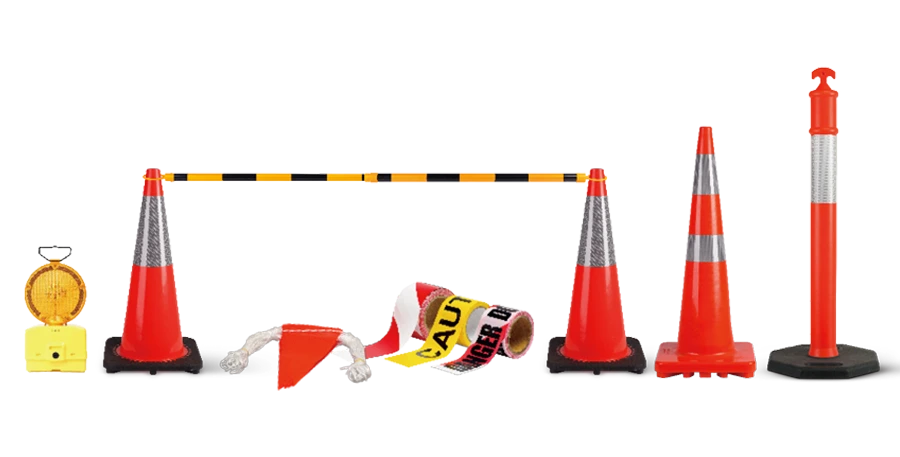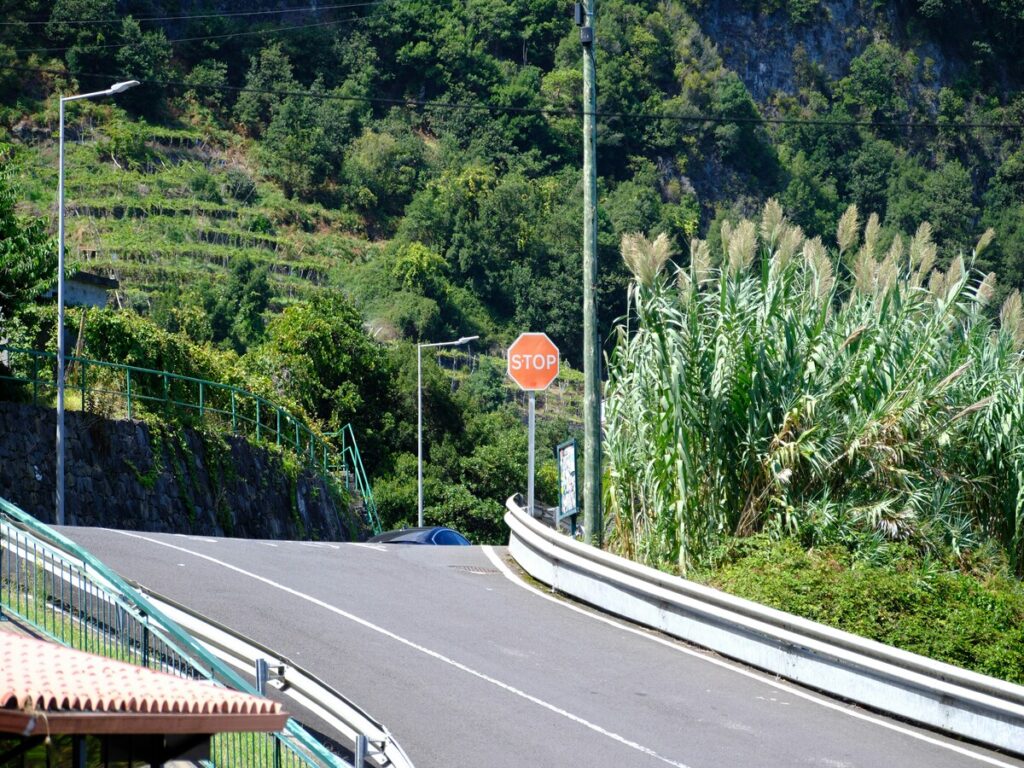
Australian roads can be hard to drive on at night. It is very important to stay safe when it is dark. Drivers cannot see as well and lights can hurt their eyes. They also react more slowly. Many deadly crashes happen on busy roads at night. More than half of emergency vehicle accidents happen at night. Most police deaths also happen during these hours. Using Class 3 reflective road signs helps keep people safer. This material follows strict rules for brightness and contrast. It makes signs easy to see, even when it is very dark.
A Optraffic, we manufacture Class 3 Segni di sicurezza del traffico that comply with Australian safety standards—providing long-lasting, high-performance solutions that keep road users safe, giorno o notte.
Takeaway chiave
- Classe 3 reflective sheeting is very bright and strong. It helps people see road signs at night and in bad weather.
- Using Class 3 signs can help stop accidents. Drivers get more time to see signs and react. This keeps everyone safer on the road.
- Classe 3 signs cost more at first. But they last longer and do not need to be replaced as often. This saves money in the long run.
- Classe 3 reflective sheeting follows Australian safety rules. This means road signs stay bright and work well for many years.
- Road authorities should use Class 3 sheeting on busy roads. They should also use it at intersections and work zones. This helps keep drivers and workers safe.
Reflective Road Signs and Safety
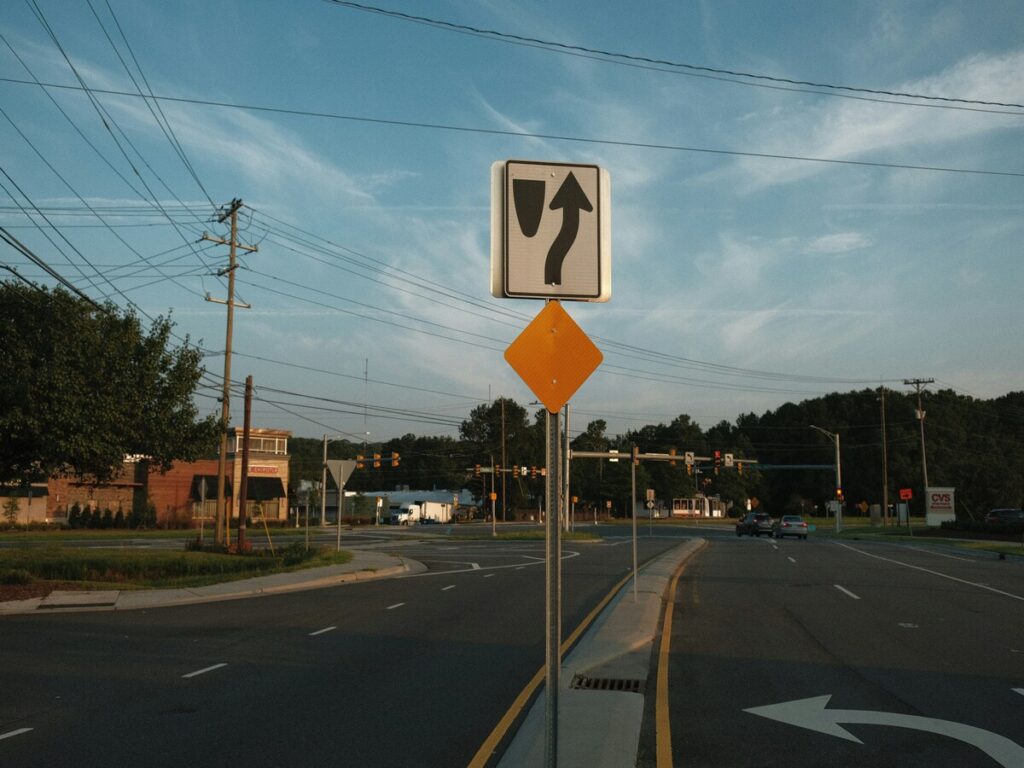
Reflective Sheeting Classes Explained
Road signs help keep drivers safe, Soprattutto di notte o in caso di maltempo. The kind of reflective material on signs changes how well drivers can see them. There are three main classes: Classe 1, Classe 2, e classe 3. Each class gives a different level of visibility and lasts for a different amount of time.
Classe 1 sheeting uses glass bead technology. It gives basic visibility and works well in low-risk places. Classe 2 sheeting is brighter and lasts longer, so it is good for suburban roads. Classe 3 sheeting uses prism technology. This class is the brightest and lasts the longest. It is best for busy roads and dangerous spots.
The table below shows how well different colours reflect light at different angles. Prism-based reflective signage works better than other types:
| Observation Angle | Entrance Angle | Bianco | Giallo | Rosso | Verde | Blu | Arancia | Brown |
|---|---|---|---|---|---|---|---|---|
| 0.2° | -4° | 636 | 437 | 105 | 85 | 56 | 261 | 77 |
| 30° | 259 | 206 | 43 | 33 | 21 | 112 | 30 | |
| 0.5° | -4° | 460 | 367 | 91 | 71 | 37 | 203 | 57 |
| 30° | 85 | 72 | 16 | 13 | 6.3 | 38 | 9.9 |
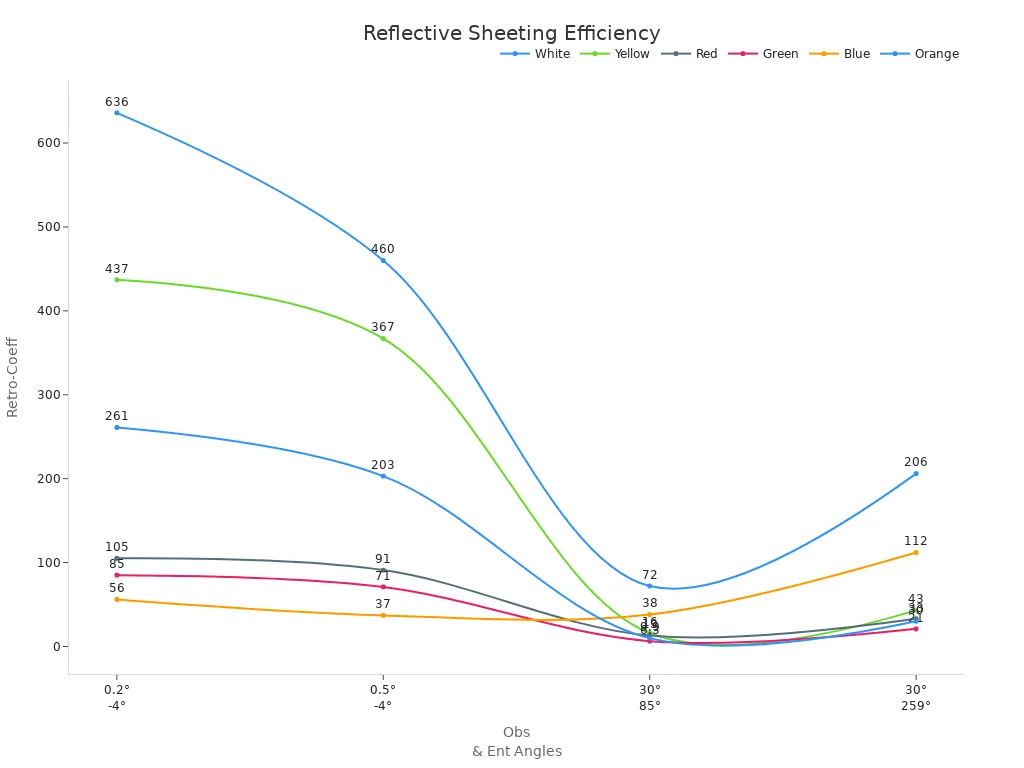
Classe 3 reflective signage stays bright even after years of bad weather. Studies show these materials keep reflecting light for a long time, even after cleaning or being outside. This means road authorities can trust Class 3 sheeting to keep people safe and save money.
Why Class 3 for Australian Roads
Australian roads have strong sun and heavy rain. Classe 3 reflective signage is easy to see and very tough. Drivers can spot these signs in the dark or in fog. This helps stop accidents on busy and dangerous roads.
Signs made with Class 3 sheeting last longer and do not need much fixing. They do not scratch easily and can handle UV rays and water. This means fewer replacements and lower costs over time. Road authorities pick Class 3 reflective signage to keep roads safe and signs working well, no matter the weather.
Nota: Buying high visibility reflective signage is a proven way to make roads safer for everyone.
Cost and Maintenance of Reflective Signage
Installation Costs Compared
Road authorities must pick the right materials for road signs. Classe 3 reflective signage costs more at first than Class 1 or Class 2. But paying more at the start gives big benefits later. Studies show that higher costs are balanced by longer use and fewer replacements.
- Sopra 10 anni, premium reflective signage can save money or cost the same as standard signs.
- Premium cold plastic systems, like Class 3 reflective signage, can save up to 35% on first application costs.
- Using premium materials for both new signs and renewals gives the best value over time.
- Premium systems use less paint and glass beads, which helps the environment.
The table below shows how much different sign classes cost over ten years:
| Sign Class | Initial Cost (per sign) | Renewal Frequency (10 anni) | Total 10-Year Cost (per sign) |
|---|---|---|---|
| Classe 1 | Basso | 3–4 times | Alto |
| Classe 2 | Medium | 2–3 times | Medium |
| Classe 3 | Alto | 1–2 times | Low/Medium |
Buying Class 3 reflective signage may look expensive at first, but it saves money and keeps people safer in the long run.
Maintenance and Replacement Cycles
How often road signs need fixing depends on the type of reflective signage. Classe 3 reflective signage is strong and lasts a long time. Studies of over 500 road signs found that age, brand, and colour change how fast signs lose brightness. Signs with good reflective materials, like Class 3, stay bright for many years.
Blue road signs in some European countries can last up to 35 anni. White signs last about 16 anni, and red signs last about 10 anni. This means Class 3 reflective signage could have checks and warranties for 15 years or more, which is longer than the usual 10 anni. New models help road authorities plan when to replace signs, so they do not waste time or money.
Long-Term Value for Road Authorities
Classe 3 reflective signage gives the best long-term value for road authorities. Its strength means fewer replacements and less maintenance, which saves money. These signs work well even in tough Australian weather.
Road authorities get:
- Lower total costs because signs last longer.
- Better safety for drivers and workers near road signs.
- More sustainability, as premium reflective signage makes less waste and is better for the environment.
Picking Class 3 reflective signage for road signs helps keep roads safe, saves money, and supports better traffic management for many years.
Night-Time Road Safety and Accident Prevention
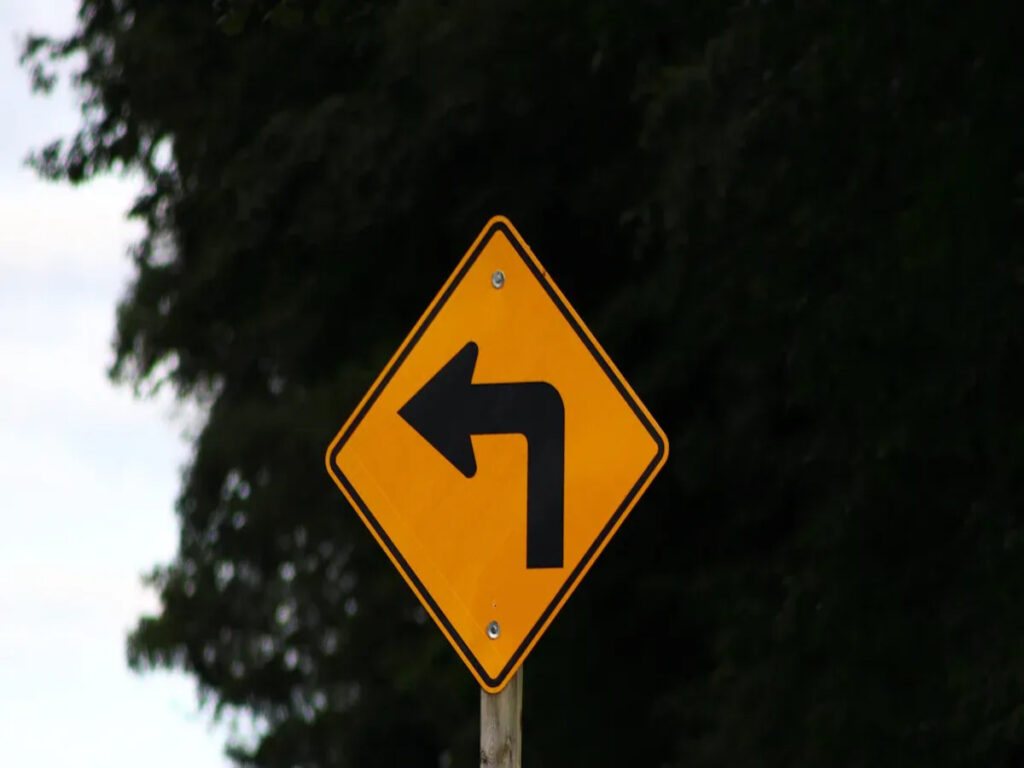
Enhanced Visibility and Driver Response
Road authorities care a lot about keeping roads safe at night. Drivers have more trouble seeing dangers when it is dark. This makes accidents more likely. Bright road construction traffic signs help drivers notice problems sooner. Research shows that retroreflective materials and high visibility signs let drivers see signs from further away. This gives drivers extra time to react, which helps stop crashes.
Classe 3 reflective sheeting on road construction traffic signs is easy to see in the dark. These signs use prism technology to send light back to drivers. This makes the signs stand out more. Studies show that these signs help drivers react better. Per esempio, photoluminescent and LED-enhanced road construction traffic signs make drivers stop more and slow down at railway crossings. Drivers notice these signs more, which keeps everyone safer, including people walking or working nearby.
Nota: Bright road construction traffic signs are very important in country areas where there are not many street lights.
Accident Reduction Statistics
Reflective road construction traffic signs help lower the number of accidents. Many studies show that roads with bright, clear signs have fewer crashes. The table below shows how reflective signs and other safety products help:
| Descrizione statistica | Accident Reduction / Improvement |
|---|---|
| Roads with high-contrast, high-reflectivity signs | 25% meno incidenti |
| LED warning signs for “stopped traffic ahead” | 34% fewer rear-end crashes |
| Rubber bollards in Melbourne CBD | 87% fewer cars going off the road |
| Temporary traffic control products (barriere, coni, segni) | 30-40% fewer safety problems during roadworks |
| Safety cones with Class 1 reflective collars | Fino a 280% brighter (luminance) |
| Reflective parking signs and flexible bollards (retail sites) | 44% fewer customer incident reports |
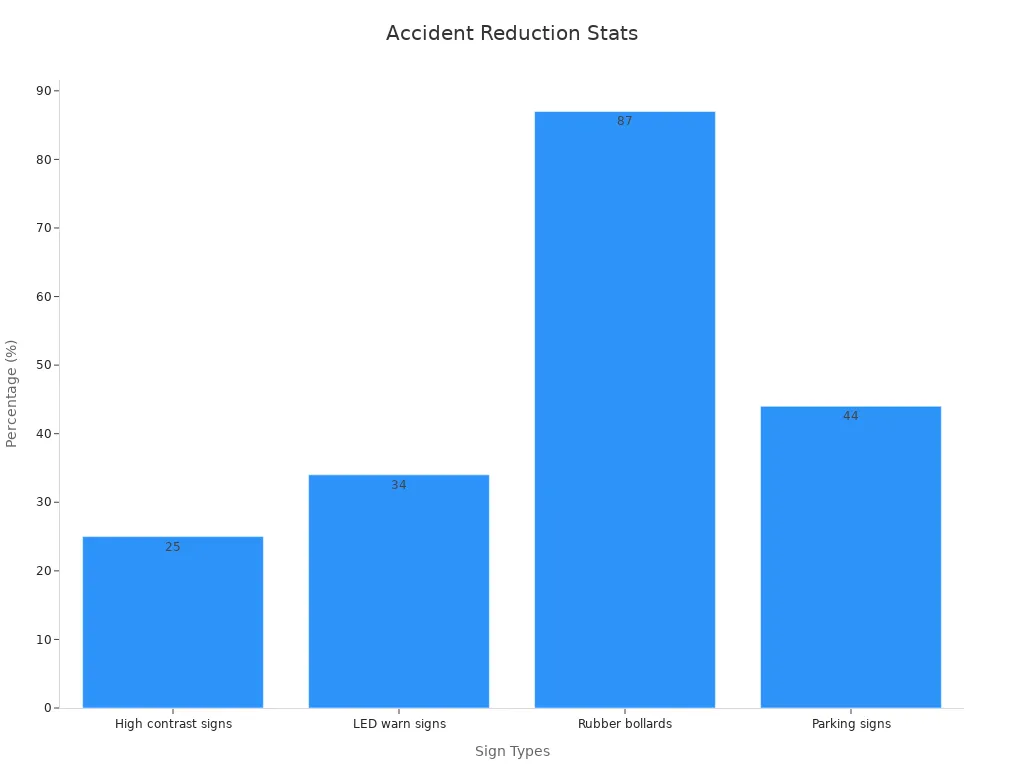
A study in Ohio found that making Chevron signs reflective made them over 65% bigger in reflective area. This made them 286% brighter at 225 metres away. Drivers could see these road construction traffic signs from further away, so they had more time to react and avoid accidents. Research also shows that better reflective signs can cut crashes by 16-25% at bends and crossings. These changes help not just drivers but also people walking and riding bikes, who need to see road construction traffic signs to stay safe.
- Bright road construction traffic signs help drivers react faster because they can see signs from further away.
- Better reflective signs can cut crashes by up to 25% in dangerous places.
- Reflective road construction traffic signs help keep people walking and cycling safe by making signs easier to see at crossings and bike lanes.
- New reflective materials in road construction traffic signs last longer, so they need less fixing.
Compliance with Australian Standards
Australian standards have strict rules for road construction traffic signs. These rules say signs must be bright and last a long time to keep everyone safe. Classe 3 reflective sheeting meets or beats these rules. Road authorities use these materials to follow australian standards for night-time safety, Sicurezza della zona di lavoro, e controllo del traffico.
Australian standards set the brightness, colore, and reflectivity for road construction traffic signs. Classe 3 sheeting makes signs easier to see, which is important at night and in bad weather. Road construction traffic signs made with Class 3 materials help road authorities follow the law and lower their risk. These signs also make work zones safer by showing dangers clearly to drivers and people walking.
Road authorities that use Class 3 reflective road construction traffic signs and follow australian standards show they care about public safety and good traffic control.
Australian standards also say where to put and how to look after road construction traffic signs. Regular checks make sure signs stay bright and easy to see. By picking Class 3 fogli riflettenti, road authorities help keep roads safe for a long time, manage traffic better, and follow all australian standards.
Casi studio: Reflective Signage in Action
Highways and Intersections
Australian highways and intersections can be tricky for drivers. People drive fast and must decide quickly. Road construction traffic signs with Class 3 reflective sheeting are easier to see. This is helpful for older drivers. A real-life study checked how far drivers could read street-name signs at busy intersections. Signs with Class 3 reflective sheeting had an average reading distance of 142 piedi. This is more than the 130 feet for basic Type I sheeting. Drivers could read signs earlier and looked at them less often. This helped them pay more attention to driving and spotting dangers.
| Sheeting Type | Distanza di leggibilità media (ft) | Observed Benefit Compared to Type I |
|---|---|---|
| Type IX | 172 | Much longer reading distance than Type III and Type I |
| Type VII | 170 | Much longer reading distance than Type III and Type I |
| Tipo III | 142 | Longer reading distance than Type I; easier to read |
| Tipo I. | 130 | Lowest reading distance |
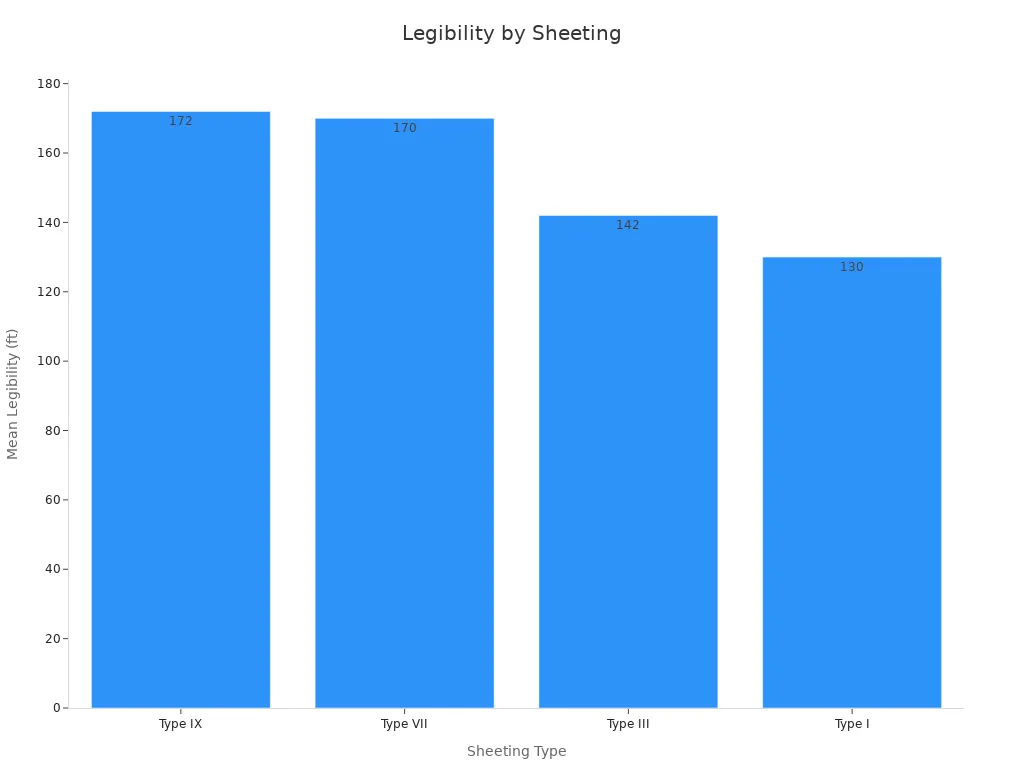
Classe 3 reflective sheeting on road construction traffic signs helps stop confusion at busy intersections. These signs make it easier for everyone to see, no matter the weather or time.
Urban and Emergency Zones
Cities and emergency areas need clear road construction traffic signs for drivers and people walking. Classe 3 reflective signage stands out in cities with lots of lights and cars. City councils have seen fewer problems after using Class 3 reflective signage. Emergency teams use these signs to help vehicles move quickly and safely when there is an emergency.
Road construction traffic signs with high reflectivity make work zones safer and help teams act faster in emergencies.
Nelle zone di lavoro, clear road construction traffic signs show drivers where to go and keep workers safe. These signs also help teams keep roads open and safe for everyone. Pedestrian crossings are safer because the signs are easier to see. Councils found that using Class 3 reflective signage means fewer replacements and lower costs over time. This helps manage traffic well and keeps people safe.
Classe 3 reflective sheeting is a smart choice for road authorities. It follows Australian standards for being bright and tough. These signs help keep people safe and stop accidents. Councils do not need to replace them as often, so they spend less money. Australian standards say signs must be easy to see and last a long time. Road authorities should use good materials for their signs. This helps keep roads safe and follows the rules. Using the right reflective sheeting helps roads stay safe for many years.
Domande frequenti
What makes Class 3 reflective sheeting different from other classes?
Classe 3 sheeting uses special prism technology. It is the brightest and strongest type. Road authorities pick it for busy roads and risky places. It stays easy to see in any weather.
How long does Class 3 reflective sheeting last on Australian roads?
Classe 3 reflective sheeting can last at least 15 anni. It does not fade or get damaged by the sun or rain. This means signs do not need to be replaced often.
Does Class 3 reflective sheeting meet Australian safety standards?
SÌ. Classe 3 reflective sheeting meets all Australian rules for road sign brightness and strength. Road authorities use it to follow the law and keep people safe.
Is investing in Class 3 reflective sheeting cost-effective?
Col tempo, Classe 3 sheeting saves money. It needs fewer replacements and less fixing. This lowers costs. Road authorities get better safety and value for many years.
Where should road authorities use Class 3 fogli riflettenti?
Authorities should use Class 3 sheeting on highways, incroci, work zones, and busy or dangerous places. These spots need the best signs to keep everyone safe.

